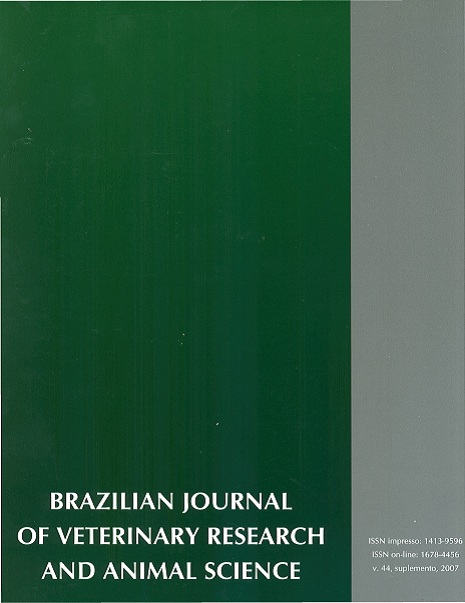Microvascular anatomy of canines stomach and gastric injury caused by nonsteroidalanti-inflammatory drugs
DOI:
https://doi.org/10.11606/issn.1678-4456.bjvras.2007.26584Keywords:
NSAIDs, Gastric damage, Microvascular anatomy, Prostaglandins, Blood flowAbstract
The nonsteroidal antiinflammatory drugs (NSAIs) inhibit the synthesis of prostaglandins, with subsequent reduction of mucus and bicarbonate secretion by the gastric epithelium, reduction of the hydrophobicity of the epithelial layer, impairment of cellular restitution, reduction of the blood flow and increase of neutrophils adhesive properties. It has been known that the gastric lesions secondary to NSAIDs use are more often located in the antral piloric and lesser curvature regions of the stomach. The higher susceptibility of these regions can be explained by their microvascular anatomy, which presents capillaries that are narrower and more contorted than those observed in other regions of the stomach; they also are more separated one from the other and they have fewer anastomosis between the ascending capillaries, becoming more predisposed to thrombosis, and consequently to gastric injury.Downloads
Download data is not yet available.
Downloads
Published
2007-12-03
Issue
Section
UNDEFINIED
License
The journal content is authorized under the Creative Commons BY-NC-SA license (summary of the license: https://
How to Cite
1.
Araújo KPC, Blazquez FJH. Microvascular anatomy of canines stomach and gastric injury caused by nonsteroidalanti-inflammatory drugs. Braz. J. Vet. Res. Anim. Sci. [Internet]. 2007 Dec. 3 [cited 2024 Apr. 25];44(supl.):14-8. Available from: https://www.revistas.usp.br/bjvras/article/view/26584





